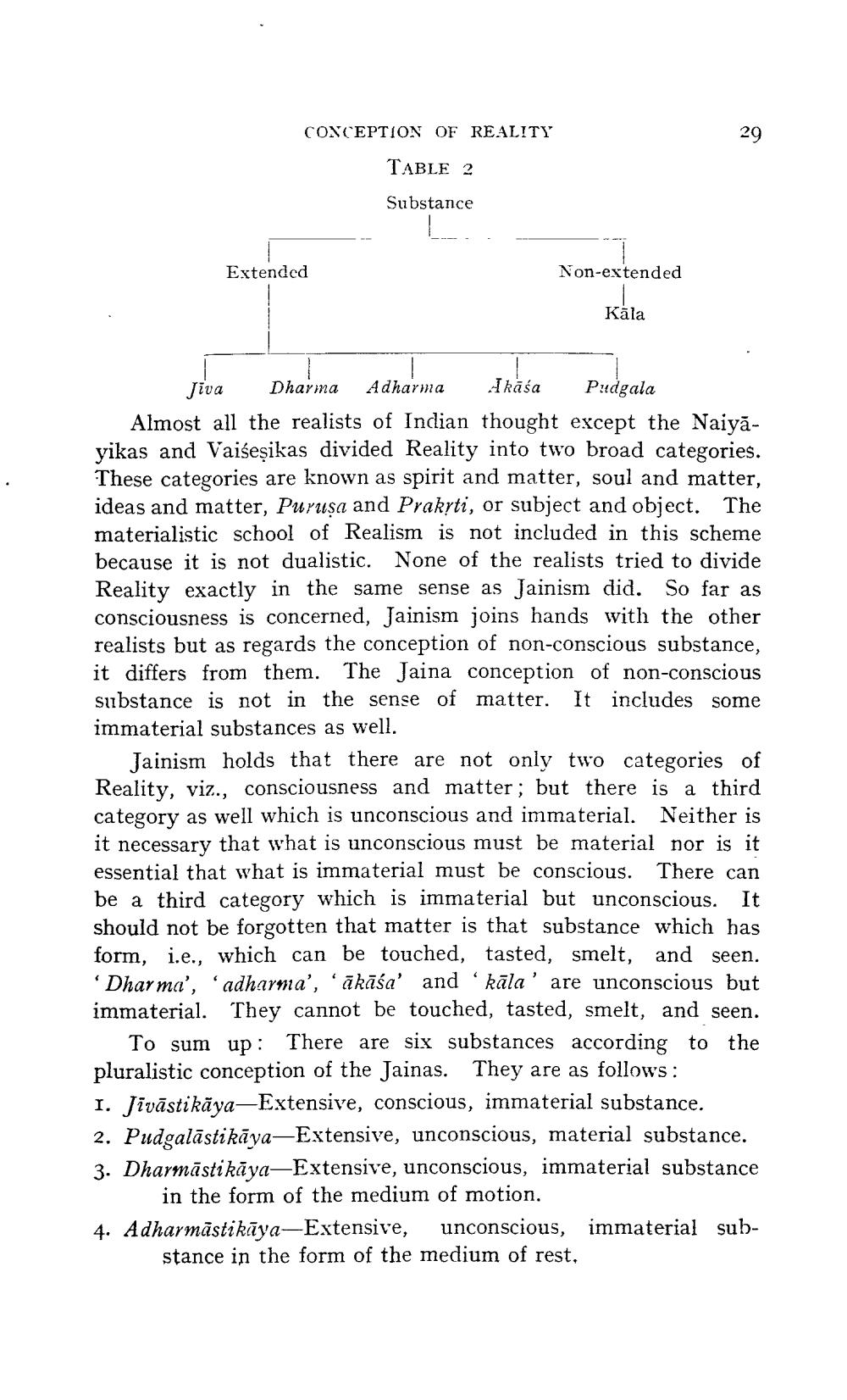________________
CONCEPTION OF REALITY
Extended
TABLE 2
Substance
L
Non-extended
Käla
Jiva
Dharma
Adharma
Akāśa
Pudgala
Almost all the realists of Indian thought except the Naiyayikas and Vaiseṣikas divided Reality into two broad categories. These categories are known as spirit and matter, soul and matter, ideas and matter, Puruşa and Prakyti, or subject and object. The materialistic school of Realism is not included in this scheme because it is not dualistic. None of the realists tried to divide Reality exactly in the same sense as Jainism did. So far as consciousness is concerned, Jainism joins hands with the other realists but as regards the conception of non-conscious substance, it differs from them. The Jaina conception of non-conscious substance is not in the sense of matter. It includes some immaterial substances as well.
4. Adharmastikaya-Extensive,
29
Jainism holds that there are not only two categories of Reality, viz., consciousness and matter; but there is a third category as well which is unconscious and immaterial. Neither is it necessary that what is unconscious must be material nor is it essential that what is immaterial must be conscious. There can be a third category which is immaterial but unconscious. It should not be forgotten that matter is that substance which has form, i.e., which can be touched, tasted, smelt, and seen. 'Dharma', 'adharma', ākāśa' and 'kala' are unconscious but immaterial. They cannot be touched, tasted, smelt, and seen.
"
unconscious,
stance in the form of the medium of rest,
To sum up: There are six substances according to the pluralistic conception of the Jainas. They are as follows: 1. Jivāstikaya-Extensive, conscious, immaterial substance. 2. Pudgalāstikaya-Extensive, unconscious, material substance. 3. Dharmastikaya-Extensive, unconscious, immaterial substance in the form of the medium of motion.
immaterial sub




